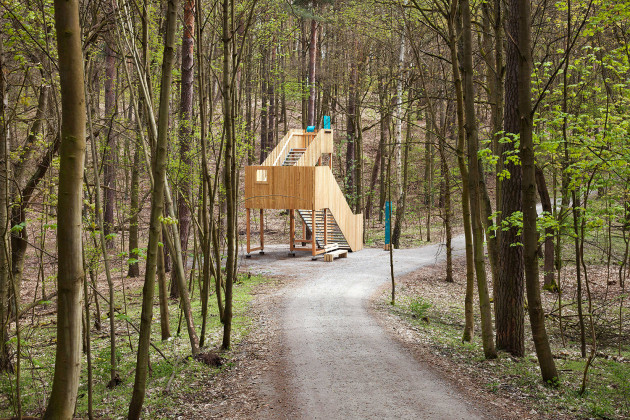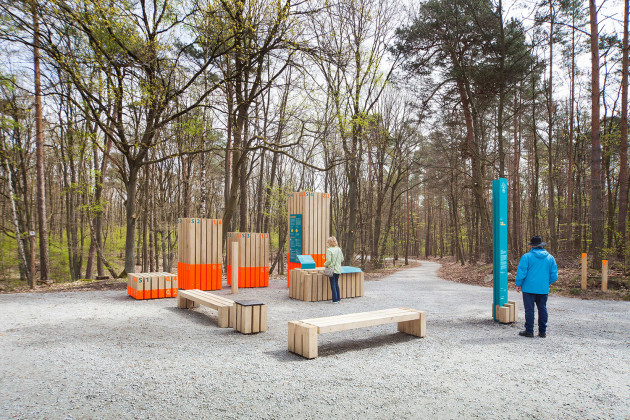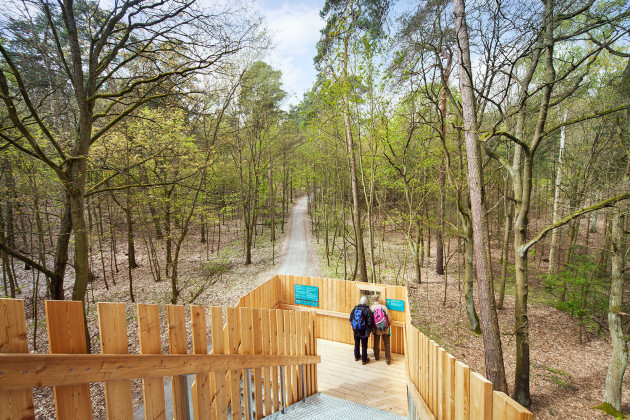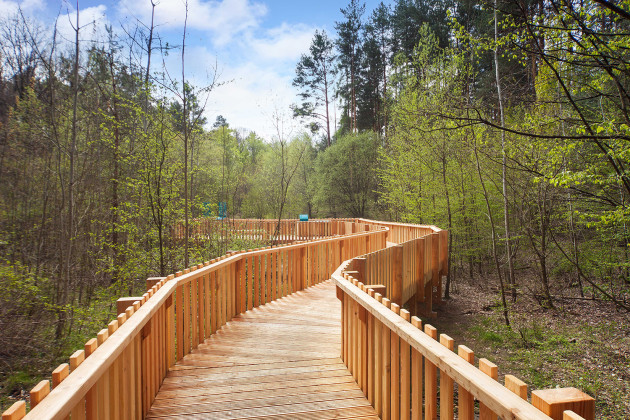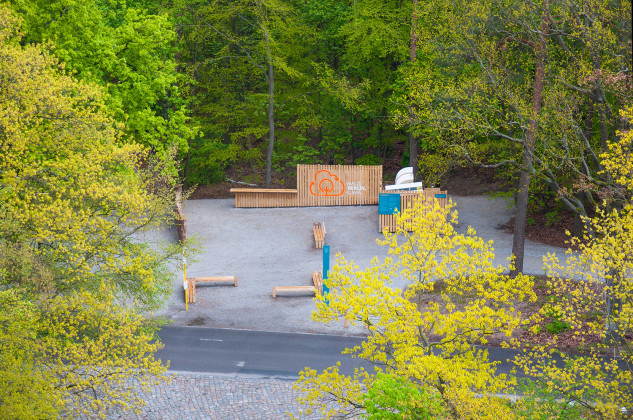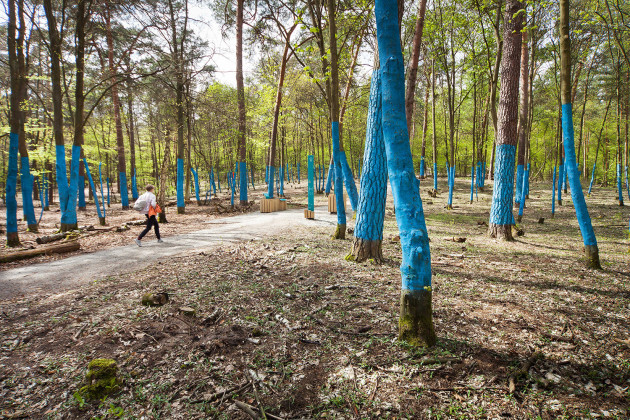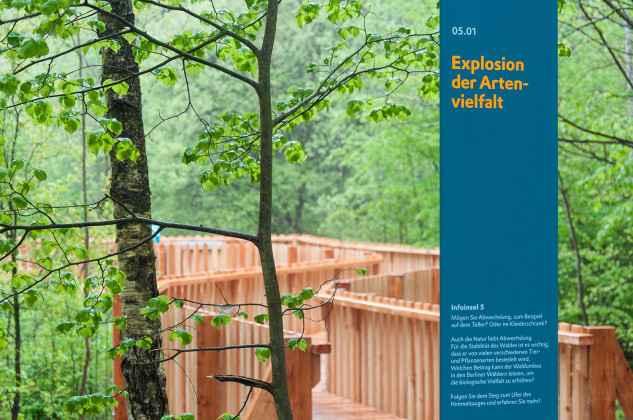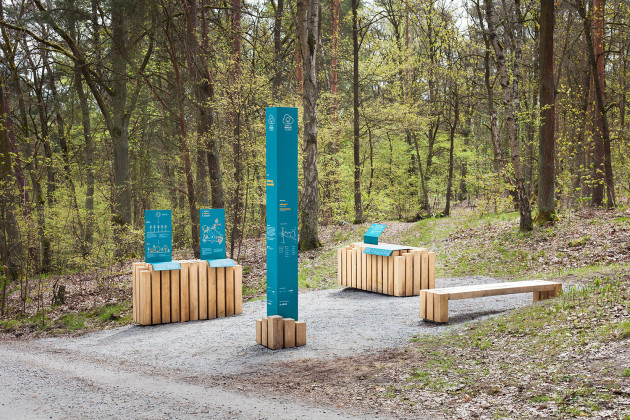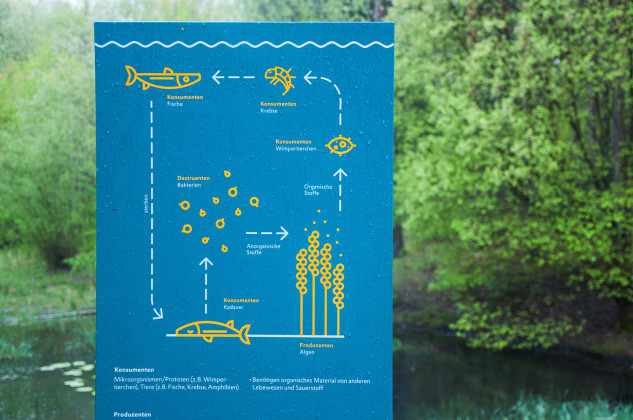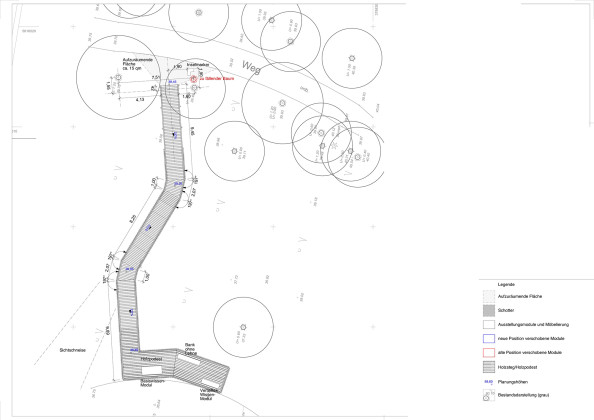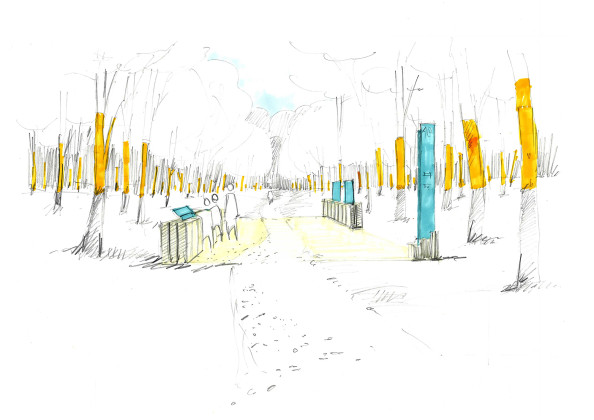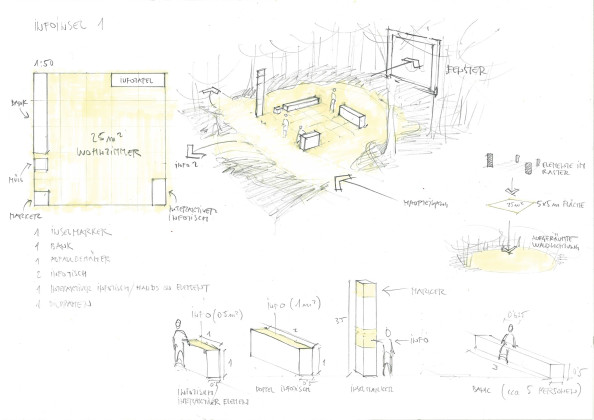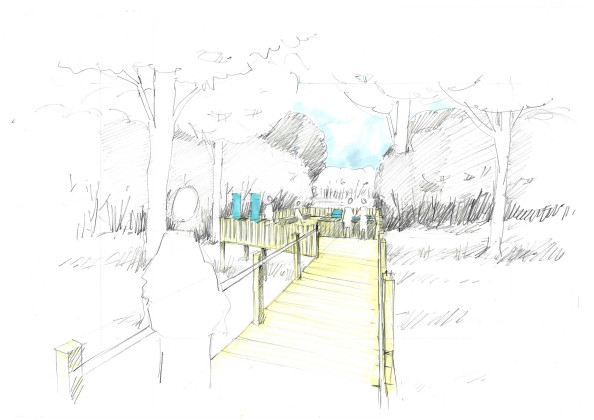Narrating Nature in the Nature
As an exhibition spread into forest, the project aims to raise awareness on climate change, as well as discussing management of natural sources, climate policies and cities’ respond to this global problem
To which extend does climate change impact our forests and how can we prepare them for it? How important is the forest for big cities? How do we manage it as a natural resource? And finally, what does it take to turn a path through the forest into an exhibition?
Opened in April 2017, the exhibition "Wald.Berlin.Klima." offers an insight into these questions. It is the combined effort of the two offices Gewerkdesign and HochC Landschaftsarchitekten in cooperation with Berlin City Council and the forest management department. Forest adaptability and resilience to climate change are the overarching topics discussed in this exhibition. Here, one learns about the interrelations of climate change, forest and its meaning for the city of Berlin. Insights are gained into the efforts of transforming forests dominated by pine tree plantations into mixed woods in accordance with sustainable forest management within the so-called mixed forest development program. Information can be found about the important part forests and moors play as C02 sinks and about the impact of C02 on city inhabitants. Furthermore, regional climate politics are discussed in the global context. The exhibition explains the causes, impacts and consequences of climate change.
Eleven “information islands” along an approximately 4 km loop path present themselves as forest “living rooms” and provide extensive information about the adaptation of Berlin forests to climate change. Each one of the stations covers a different part of this complex topic. While the stations are linked to each other, they still function as independent units, thus enabling the exhibition to be entered at any point along the path. At each station educational content is presented as text as well as an individual installation that visualizes information in a comprehensive manner. In ever different scenarios the visitor is invited to experience the exhibition with all of his senses and to become a part of it. The further the visitor proceeds along the path, the more he sees the singular strands of information linking up making him understand his own place within the complex system of nature.
However, the exhibition does not only have an educational purpose. Leading through diverse landscapes seamed by beautiful forest scenes and open moors the path offers the visitor, old and young, a chance to relax and to experience nature in its full beauty. Numerous additional installations, wooden decks and viewing platforms turn the exhibition into a modern, sustainable, environmentally conscious, playful and interactive showcase of nature.
The modular architectural style originating from urban geometrical structures forms the platforms’ basic design language. Orthogonal wooden posts of 14x14 cm with 3 cm gaps between them are assembled in different forms and sizes. The gaps enable the wood to breath naturally and allow the space to be conquered by plants through the years. The surfaces are not treated chemically allowing natural weathering. Metall bars do not only stabilize the construction but also enable the installation of steel signs that can be practically plugged into the gaps of the structure. The signs can be easily mounted and dismounted due to a simple mechanism while the wooden modules keep their function as exhibition medium whose carried content can be flexibly changed. An easy understanding of complex information is achieved by form-reduced Infographics and texts depicted on the signs.
The stations’ visual language presents a contrast to the natural structure of the forest. They emphasize the differences of urbanity and landscape and incentivize the exploration of the surrounding natural world. An interplay is created between the 1, 27km2 forest area as exhibition space, the information platforms as overarching network of content and the human as part of the natural system. It is this very connection that enables the visitor to become aware of the meaning of forests for the metropolis. A preexisting path through the forest is turned into an exhibition.
Related Content:
-

Park of Memories Aš
-

Sister Sylvester and Deniz Tortum's "Shadowtime" Poses a Virtual Reality Check at SXSW
-

The Paint Store
-
Expanding Space: Transforming Honsberg through Art
In Germany Honsberg, a district of Remscheid with a rich history, the "Ins Blaue" project has been redefining urban spaces through art. Brought to life by a group of dedicated artists, this initiative has turned abandoned houses into vibrant studios, galleries, and event spaces. We have interviewed Katja Wickert, one of the curators of the organization and the artists involve - Vera Vorneweg, Adrienne Brehmer, Eva Wal and Hacer Bozkurt - exploring the inception of "Ins Blaue", this year's theme of "Expanding Space" and the impact of their creative endeavors on both the neighborhood and its residents.
-

Ceiling of the Sea
-

Tree House
-

NEST
-

Rami Library – Landscape Project
 03.11.2017
03.11.2017



